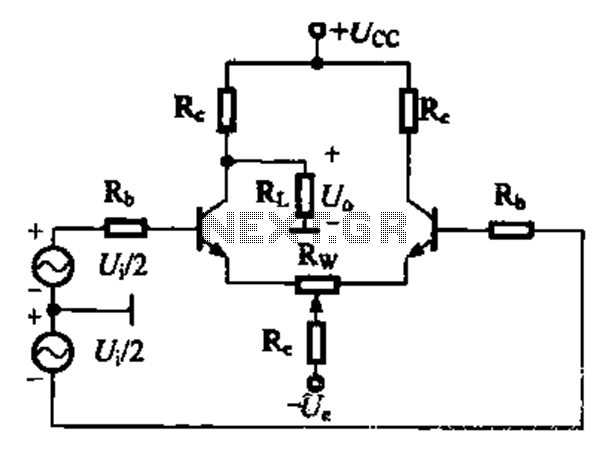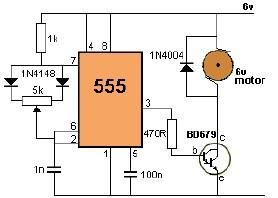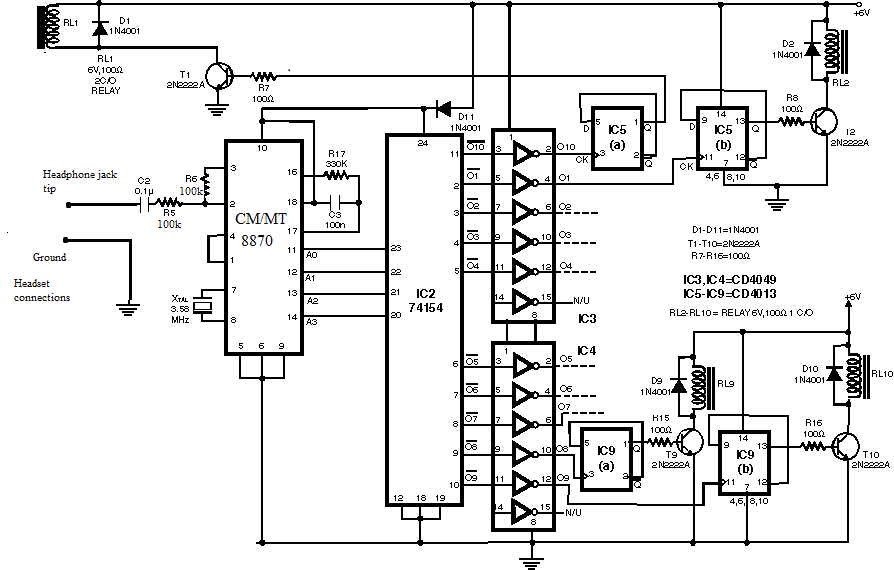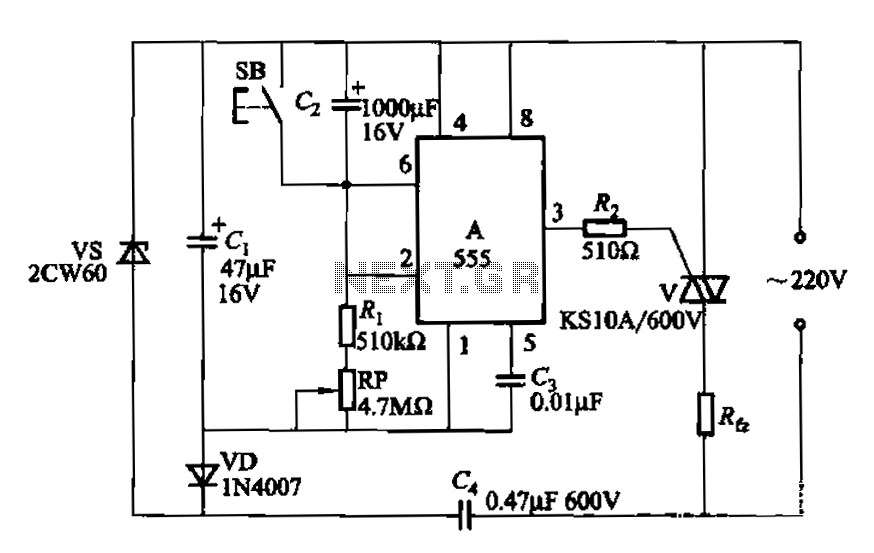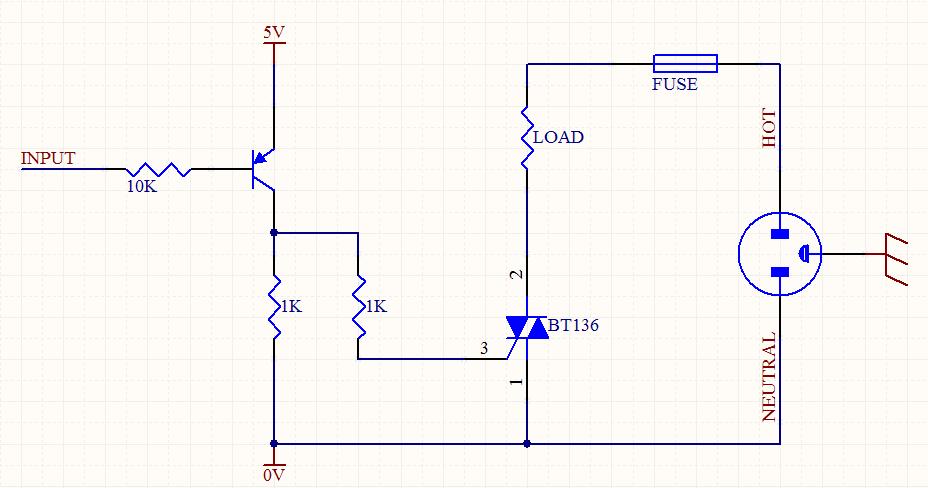
8 Random Flashing Leds Circuit
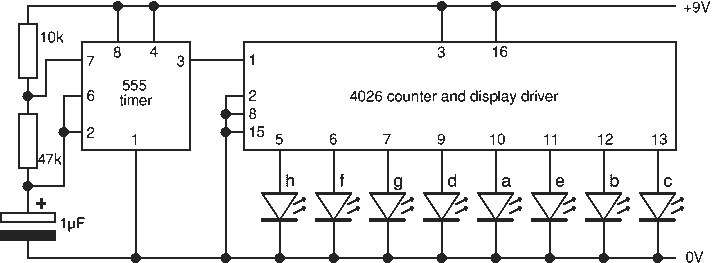
This project flashes eight LEDs in an apparently random manner. It uses a 4060 combined counter and display driver IC which is designed for driving 7-segment LED displays. The sequence is not really random because seven of the LEDs would normally be the display segments, the eighth LED is driven by an output that is normally used for driving further counters. The table below shows the sequence for the LEDs. You can use less than eight LEDs if you wish and the table may help you decide which ones to use for your purpose.
The circuit utilizes the CD4060 integrated circuit, which features a built-in oscillator, counter, and display driver capabilities. The oscillator generates a clock signal that drives the counter, which counts in binary and subsequently decodes the output to control the LED display. The seven outputs corresponding to the display segments (A through G) are utilized to drive the LEDs, while the eighth output is used to control an additional LED, allowing for a more complex display pattern.
The configuration of the circuit can be tailored by adjusting the resistors and capacitors connected to the oscillator section of the CD4060. This adjustment allows for changing the frequency of the flashing LEDs, thereby influencing the perceived randomness of the display. The use of a low-pass filter may also be implemented to smooth out the flickering effect, providing a more visually appealing output.
For practical implementation, it is recommended to use current-limiting resistors in series with each LED to prevent excessive current flow, which could damage the components. The values of these resistors can be calculated based on the forward voltage drop of the LEDs and the supply voltage used in the circuit. The sequence of illumination can be predetermined by configuring the counter outputs accordingly, allowing for customized patterns based on specific project requirements.
In summary, the project effectively demonstrates the use of a CD4060 IC to create a visually engaging LED display, leveraging its built-in functionalities to achieve a sequence that appears random while being systematically controlled. Adjustments to the circuit can enhance its versatility for various applications.This project flashes eight LEDs in an apparently random manner. It uses a 4060 combined counter and display driver IC which is designed for driving 7-segment LED displays. The sequence is not really random because seven of the LEDs would normally be the display segments, the eighth LED is driven by an output that is normally used for driving further counters.
The table below shows the sequence for the LEDs. You can use less than eight LEDs if you wish and the table may help you decide which ones to use for your purpose. 🔗 External reference
The circuit utilizes the CD4060 integrated circuit, which features a built-in oscillator, counter, and display driver capabilities. The oscillator generates a clock signal that drives the counter, which counts in binary and subsequently decodes the output to control the LED display. The seven outputs corresponding to the display segments (A through G) are utilized to drive the LEDs, while the eighth output is used to control an additional LED, allowing for a more complex display pattern.
The configuration of the circuit can be tailored by adjusting the resistors and capacitors connected to the oscillator section of the CD4060. This adjustment allows for changing the frequency of the flashing LEDs, thereby influencing the perceived randomness of the display. The use of a low-pass filter may also be implemented to smooth out the flickering effect, providing a more visually appealing output.
For practical implementation, it is recommended to use current-limiting resistors in series with each LED to prevent excessive current flow, which could damage the components. The values of these resistors can be calculated based on the forward voltage drop of the LEDs and the supply voltage used in the circuit. The sequence of illumination can be predetermined by configuring the counter outputs accordingly, allowing for customized patterns based on specific project requirements.
In summary, the project effectively demonstrates the use of a CD4060 IC to create a visually engaging LED display, leveraging its built-in functionalities to achieve a sequence that appears random while being systematically controlled. Adjustments to the circuit can enhance its versatility for various applications.This project flashes eight LEDs in an apparently random manner. It uses a 4060 combined counter and display driver IC which is designed for driving 7-segment LED displays. The sequence is not really random because seven of the LEDs would normally be the display segments, the eighth LED is driven by an output that is normally used for driving further counters.
The table below shows the sequence for the LEDs. You can use less than eight LEDs if you wish and the table may help you decide which ones to use for your purpose. 🔗 External reference

